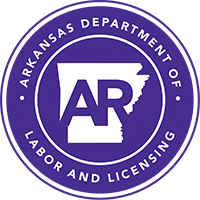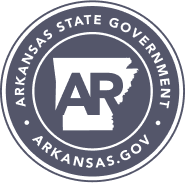Survey of Occupational Injuries and Illnesses (SOII)
Survey of Occupational Injuries and Illnesses (SOII)
ARKANSAS WORK-RELATED INJURIES AND ILLNESSES FOR 2022
Little Rock – The Arkansas Department of Labor and Licensing has released the 2022 non-fatal injury and illness data. These estimates are from the annual Survey of Occupational Injuries and Illnesses (SOII).
A total of 27,800 work-related injuries and illnesses were reported to have occurred in Arkansas for private and public sectors combined in 2022, up from 26,000 in 2021. The overall incidence rate of total recordable cases (TRC) was 2.6 in 2022. The 2021 incidence rate was 2.5. Incidence rates represent the number of injuries and illnesses per 100 full-time equivalent (FTE) workers.
Private Sector
Private industry employers in Arkansas reported 23,200 non-fatal injuries and illnesses in 2022, up from 21,100 in 2021. The incidence rate was 2.5 injury and illness cases per 100 FTE workers in 2022, compared to 2.4 in 2021. The national incidence rate was 2.7 in both 2022 and 2021.
- Private industry employers reported 15,700 non-fatal injuries in 2022, compared to 15,500 in 2021. The incidence rate was 1.7 injury cases per 100 FTE workers, the same rate as 2021.
- There were 7,400 illness cases reported from private industry employers in 2022, up from 5,600 in 2021. The incidence rate of illness cases increased from 0.6 cases per 100 FTE workers in 2021 to 0.8 cases in 2022. The increase was driven by the number of respiratory illness cases, which rose from 5,100 cases in 2021 to 6,900 cases in 2022. This comes after a decrease in respiratory illnesses in 2021 compared to 2020.
- There were 11,100 non-fatal injuries and illnesses that caused a private industry worker to miss at least one day of work in 2022, compared to 9,900 cases in 2021.
- There were 3,800 cases with job transfer or restriction in 2022, compared to 3,300 in 2021.
- There were 8,200 other recordable cases in 2022, compared to 7,900 in 2021. Other recordable cases are work-related injuries or illnesses that required more than first aid but did not require day(s) away from work, job transfer or restriction.
- The goods-producing sector had 7,800 total recordable cases in 2022, up from 7,600 cases in 2021. The incidence rate was 3.4, no change from 2021. Within this sector, animal production and aquaculture had the highest subsector incidence rate at 7.4, with the poultry and egg production industry group’s incidence rate of 8.0 being a significant contributor. The food manufacturing subsector followed a close 2nd with an incidence rate of 7.3.
- The service-providing sector had 15,300 total recordable cases in 2022, up from 13,500 cases in 2021. The incidence rate was 2.2, up from 2.0 in 2021. The nursing and residential care facilities subsector had the highest overall incidence rate of 15.5 for 2022.
Public Sector
Public sector employers (State and Local Government) in Arkansas reported 4,700 non-fatal injuries and illnesses in 2022, compared to 4,900 in 2021. The incidence rate was 3.1 injury and illness cases per 100 FTE workers in 2022, compared to 3.3 in 2021.
State Government – State government employers in Arkansas reported 1,300 non-fatal injury and illness cases in 2022, compared to 1,100 in 2021. The incidence rate for state government was 2.3 cases per 100 FTE workers in 2022, compared to 1.8 in 2021.
- State government employers reported 1,200 non-fatal injuries in 2022, compared to 1,100 in 2021. The incidence rate was 2.2 injury cases per 100 FTE workers, compared to 1.7 in 2021.
- There were 400 non-fatal injury and illness cases that caused a state government employee to miss at least one day of work in 2022, same as 2021. There were 100 cases with job transfer or restriction in 2022, same as 2021. There were 800 other recordable cases in 2022, compared to 600 in 2021.
- Within State government, the nursing and residential care facilities subsector had the highest incidence rate at 9.1 for 2022. The second highest was the subsector of heavy and civil engineering construction at 6.3.
Local Government (City & County) – Local government employers in Arkansas reported 3,400 non-fatal injury and illness cases in 2022, compared to 3,800 in 2021. The incidence rate for local government was 3.6 cases per 100 FTE workers in 2022, compared to 4.3 in 2021.
- Local government employers reported 3,300 non-fatal injuries in 2022, compared to 3,100 in 2021. The incidence rate was 3.5 injury cases per 100 FTE workers, same as 2021.
- There were 100 illness cases reported from local government employers in 2022, down from 700 in 2021. The incidence rate of illness cases decreased from 0.7 cases per 100 FTE workers in 2021 to 0.1 cases in 2022.
- There were 800 non-fatal injury and illness cases that caused a local government employee to miss at least one day of work in 2022, compared to 1,000 in 2021. There were 300 cases with job transfer or restriction in 2022, compared to 500 in 2021. There were 2,400 other recordable cases in 2022, compared to 2,300 in 2021.
- Health care and social assistance had an incidence rate of 6.4. Public administration had an incidence rate of 3.5. Educational services had an incidence rate of 3.4.
Note: Because of rounding, components may not add to totals.
Detailed tables and charts by industry are available upon request.
The Survey of Occupational Injuries and Illnesses (SOII) was administered by the Arkansas Department of Labor and Licensing, Division of Labor, OSH/CFOI Section, in cooperation with the U.S. Department of Labor, Bureau of Labor Statistics. The 2017 version of the North American Industry Classification System (NAICS 2017) was used to group company data by industry. Arkansas employers are randomly selected for the survey each year.
Coronavirus (COVID-19) Pandemic Impact in SOII Results
Occupational injuries and illnesses collected in the SOII include cases of COVID-19 when a worker was infected as a result of performing their work-related duties and met other recordkeeping criteria. COVID-19 is considered a respiratory illness under criteria established by the Occupational Safety and Health Administration (OSHA).
Biennial Case and Demographic Data in the SOII
Estimates involving days away from work (DAFW) by detailed case characteristics and worker demographics for 2021 were not published last year. This year, SOII begins biennial publication for DAFW and days of job transfer or restriction (DJTR) for the period 2021-2022. This expansion provides a more complete picture of how workplace injuries and illnesses are managed. A second press release will be issued soon for this data.
For additional information, please go to www.bls.gov/iif (current and archived data for national and by individual state), www.labor.arkansas.gov, or www.bls.gov/iif/state-data.htm#AR.
Fatal occupational injuries for calendar year 2022 were not included in this study. A separate publication for the Census of Fatal Occupational Injuries (CFOI) will be issued in December of 2023.
- Incidence rates per 100 full-time workers for total nonfatal occupational injuries and illnesses, Arkansas and All United States, 2003-2022
- ARKANSAS WORK-RELATED INJURY AND ILLNESS SUMMARY DATA FOR 2021
- ARKANSAS WORK-RELATED FATALITIES FOR 2021
- ARKANSAS WORK-RELATED INJURY AND ILLNESS SUMMARY DATA FOR 2020
- ARKANSAS WORK-RELATED FATALITIES FOR 2020
- ARKANSAS WORK-RELATED INJURY AND ILLNESS SUMMARY DATA FOR 2019
- ARKANSAS WORK-RELATED INJURIES AND ILLNESSES REQUIRING DAYS AWAY FROM WORK – 2019

